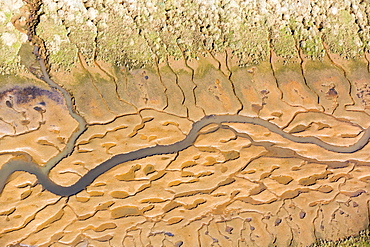Recent searches
Loading...
860-288817 - Reflection of trees in Tinto river, Rio Tinto minas, Rio Tinto, Huelva, Spain
860-288801 - Clay loaded with iron oxides and dried out, Rio Tinto, Andalusia, Spain *** Local Caption *** R?o Tinto ("Red River") is very acidic (Ph 2) and has a deep reddish hue due to iron dissolved in water. The acidity of the watercourse is linked to the drainage of pyrite, which is very present in the subsoil. Extremophilic and endemic bacteria and algae colonize the river bed, forming a fragile biofilm that evokes the hot springs of Yellowstone Park in the USA.
860-288798 - Reflections on Rio Tinto, near its source, Andalusia, Spain *** Local Caption *** R?o Tinto ("Red River") is very acidic (Ph 2) and has a deep reddish hue due to iron dissolved in water. The acidity of the watercourse is linked to the drainage of pyrite, which is very present in the subsoil. Extremophilic and endemic bacteria and algae colonize the river bed, forming a fragile biofilm that evokes the hot springs of Yellowstone Park in the USA.
860-288800 - R?o Tinto, Andalucia, Spain *** Local Caption *** R?o Tinto ("Red River") is very acidic (Ph 2) and has a deep reddish hue due to iron dissolved in water. The acidity of the watercourse is linked to the drainage of pyrite, which is very present in the subsoil. Extremophilic and endemic bacteria and algae colonize the river bed, forming a fragile biofilm that evokes the hot springs of Yellowstone Park in the USA.
860-288799 - R?o Tinto, Andalucia, Spain *** Local Caption *** R?o Tinto ("Red River") is very acidic (Ph 2) and has a deep reddish hue due to iron dissolved in water. The acidity of the watercourse is linked to the drainage of pyrite, which is very present in the subsoil. Extremophilic and endemic bacteria and algae colonize the river bed, forming a fragile biofilm that evokes the hot springs of Yellowstone Park in the USA.
860-287081 - Spanish imperial eagle (Aquila adalberti) with prey on a branch, Cordoba, Spain
860-287080 - Egyptian mongoose (Herpestes ichneumon) with prey, Cordoba, Spain
860-287082 - Spanish imperial eagle (Aquila adalberti) in flight, Cordoba, Spain
860-286713 - Aerial view of Pine trees in a field, Huelva , Andalusia, Spain
746-40967 - Ronda bullring, Malaga, Autonomous Community of Andalusia, Spain
746-40975 - Mijas, Seville, Autonomous Community of Andalusia, Spain
746-40968 - Ronda bullring, Malaga, Autonomous Community of Andalusia, Spain
746-33262 - Ronda, Malaga, Autonomous Community of Andalusia, Spain
746-40974 - Mijas, Seville, Autonomous Community of Andalusia, Spain
746-40970 - Mijas bullring, Autonomous Community of Andalusia, Spain
You reached the end of search results




















